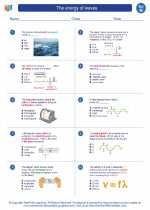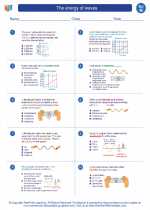Refraction
Refraction is the bending of light as it passes from one medium to another, such as from air to glass or from water to air. This bending occurs because light travels at different speeds in different mediums.
Causes of Refraction
When light enters a medium with a different optical density, its speed changes, causing it to bend. This bending is due to the change in the light's wavelength and speed.
Refraction and Lenses
Lenses, such as those in eyeglasses or cameras, use refraction to bend light in a way that allows us to see objects more clearly. Convex lenses converge light rays, while concave lenses diverge them.
Applications of Refraction
Refraction has various practical applications, including in the fields of optics, photography, and medicine. Understanding the principles of refraction is crucial for designing lenses, correcting vision problems, and creating optical instruments.
Study Guide
Here are some key points to remember about refraction:
- Refraction is the bending of light as it passes from one medium to another.
- It occurs due to the change in the speed and wavelength of light as it enters a medium with a different optical density.
- Lenses use refraction to bend light in specific ways, allowing for clearer vision or imaging.
- Refraction has practical applications in optics, photography, and medicine.






